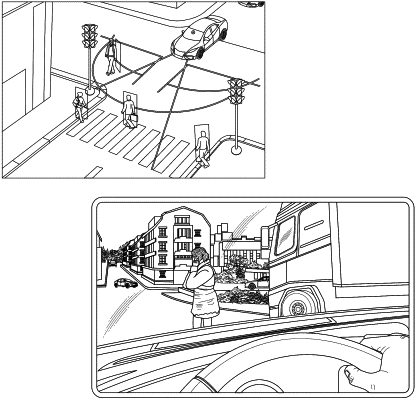| CPC G06V 20/58 (2022.01) [G06T 7/579 (2017.01); G06T 2207/30261 (2013.01)] | 22 Claims |

|
1. A vehicular vision system, the vehicular vision system comprising:
a camera disposed at an in-cabin side of a windshield of a vehicle equipped with the vehicular vision system, the camera viewing through the windshield forward of the vehicle;
wherein the camera comprises a CMOS imaging array having at least one million photosensing elements arranged in rows and columns;
an electronic control unit (ECU) comprising an image processor operable to process frames of image data captured by the camera;
wherein, responsive to image processing at the ECU of captured frames of image data, the vehicular vision system detects an object present in a field of view of the camera;
wherein, as the vehicle moves relative to the detected object, captured frames of image data are processed at the ECU to determine a point of interest, present in multiple captured frames of image data, on the detected object;
wherein the vehicular vision system, via image processing at the ECU of captured frames of image data as the vehicle moves relative to the detected object, and based on the determined point of interest present in multiple captured frames of image data, estimates a location in three dimensional space of the determined point of interest;
wherein the vehicular vision system determines, for each captured frame of image data, a corresponding projection of the estimated location into a respective image plane;
wherein the vehicular vision system determines the estimated location based on comparisons of the corresponding projections of the estimated location and the determined point of interest in the captured frames of image data; and
wherein the vehicular vision system determines distance to the determined point of interest on the detected object based on the estimated location of the determined point of interest relative to a location of the camera disposed at the vehicle.
|